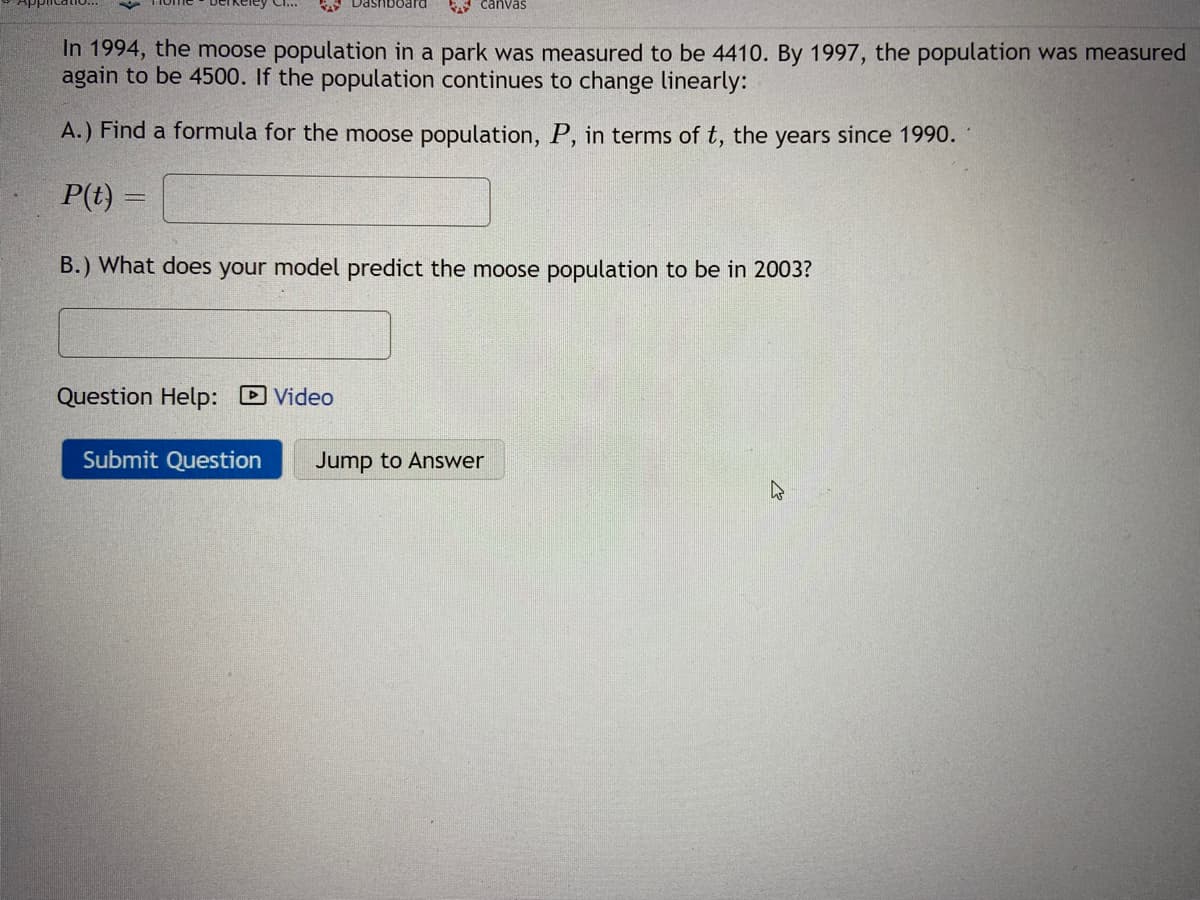In 1994, the moose population in a park was measured to be 4410. By 1997, the population was measured again to be 4500. If the population continues to change linearly: A.) Find a formula for the moose population, P, in terms of t, the years since 1990. P(t) B.) What does your model predict the moose population to be in 2003? Question Help: D Video
In 1994, the moose population in a park was measured to be 4410. By 1997, the population was measured again to be 4500. If the population continues to change linearly: A.) Find a formula for the moose population, P, in terms of t, the years since 1990. P(t) B.) What does your model predict the moose population to be in 2003? Question Help: D Video
Algebra & Trigonometry with Analytic Geometry
13th Edition
ISBN:9781133382119
Author:Swokowski
Publisher:Swokowski
Chapter3: Functions And Graphs
Section3.3: Lines
Problem 60E
Related questions
Question

Transcribed Image Text:oard
canvas
In 1994, the moose population in a park was measured to be 4410. By 1997, the population was measured
again to be 4500. If the population continues to change linearly:
A.) Find a formula for the moose population, P, in terms of t, the years since 1990.
P(t) =
B.) What does your model predict the moose population to be in 2003?
Question Help: D Video
Submit Question
Jump to Answer
Expert Solution
This question has been solved!
Explore an expertly crafted, step-by-step solution for a thorough understanding of key concepts.
This is a popular solution!
Trending now
This is a popular solution!
Step by step
Solved in 3 steps with 16 images

Recommended textbooks for you

Algebra & Trigonometry with Analytic Geometry
Algebra
ISBN:
9781133382119
Author:
Swokowski
Publisher:
Cengage

Algebra & Trigonometry with Analytic Geometry
Algebra
ISBN:
9781133382119
Author:
Swokowski
Publisher:
Cengage